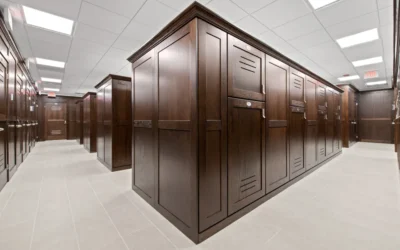As students at Cornell University in Ithaca, NY, Dan Hagberg and Nick Huber launched Storage Squad in 2011. In the span of a decade, the valet-storage company for college students blossomed into a 35-school, 10-state operation.
But in January, the two men sold Storage Squad to Wake Forest, NC-based portable storage operator 1-800-PACK-RAT for a seven-figure sum so they could concentrate on growing their portfolio of self-storage facilities. Their first facility, near the Cornell campus, opened in 2017.
Close to $10M in outside capital

Dan Hagberg
Today, Hagberg and Huber’s Bolt Storage brand encompasses 17 facilities with over 3,500 units across more than 425,000 square feet. Earlier this month, Bolt acquired a four-facility portfolio in the Elmira, NY, market. And it’s about to close on its first facility in Connecticut.
Hagberg said that when you include facilities under contract, the Bolt portfolio comprises about two dozen properties. He envisions the portfolio approaching 1 million square feet by the end of this year.
The startup has gained nearly $10 million in outside capital to fuel its rapid expansion, focusing primarily on scooping up mom-and-pop facilities in tertiary and rural markets in the Northeast. Hagberg said Bolt is targeting “a niche within a niche.”
“We’re definitely trying to look [for facilities] where some other people aren’t looking,” Hagberg said. “We want to buy cash-flowing assets that we could hold forever and still be successful.”
Technology-driven returns

Nick Huber
Huber said owners of the facilities it buys are often savvy operators who haven’t updated their businesses with the latest technology. Once it purchases a facility, Bolt relies on technology to manage it remotely, and accepts online-only rent payments via debit card, credit card or electronic check.
“To honest with you, we’re able to surprise [mom-and-pop sellers] with the amount of money we can offer them because we run the thing efficiently, and all we need to do is buy at a certain cap rate that makes sense for us,” Huber said. “And if we’re spending less money than other potential buyers to operate the facility, then it’s more profitable and we can pay more.”
‘Insanely competitive’
Nonetheless, Bolt Storage faces stiff competition when it bids on a facility. In fact, Huber estimates his company is on the losing end of 90% to 95% of the offers it submits.
“I would say that it’s very difficult to buy right now in this market,” Huber said. “You could have a 10,000-square-foot property in a town of less than 10,000 people, and you’ll have 10 offers on it right now. It’s insanely competitive, even in the tertiary markets and rural markets.”
Huber said he and Hagberg may sell their portfolio at some point. But for now, they’re content with hanging onto their portfolio — at least until major self-storage players embrace remotely managed facilities.
“When they do, that’s when the facilities in our markets will get a lot more valuable,” Huber said.







